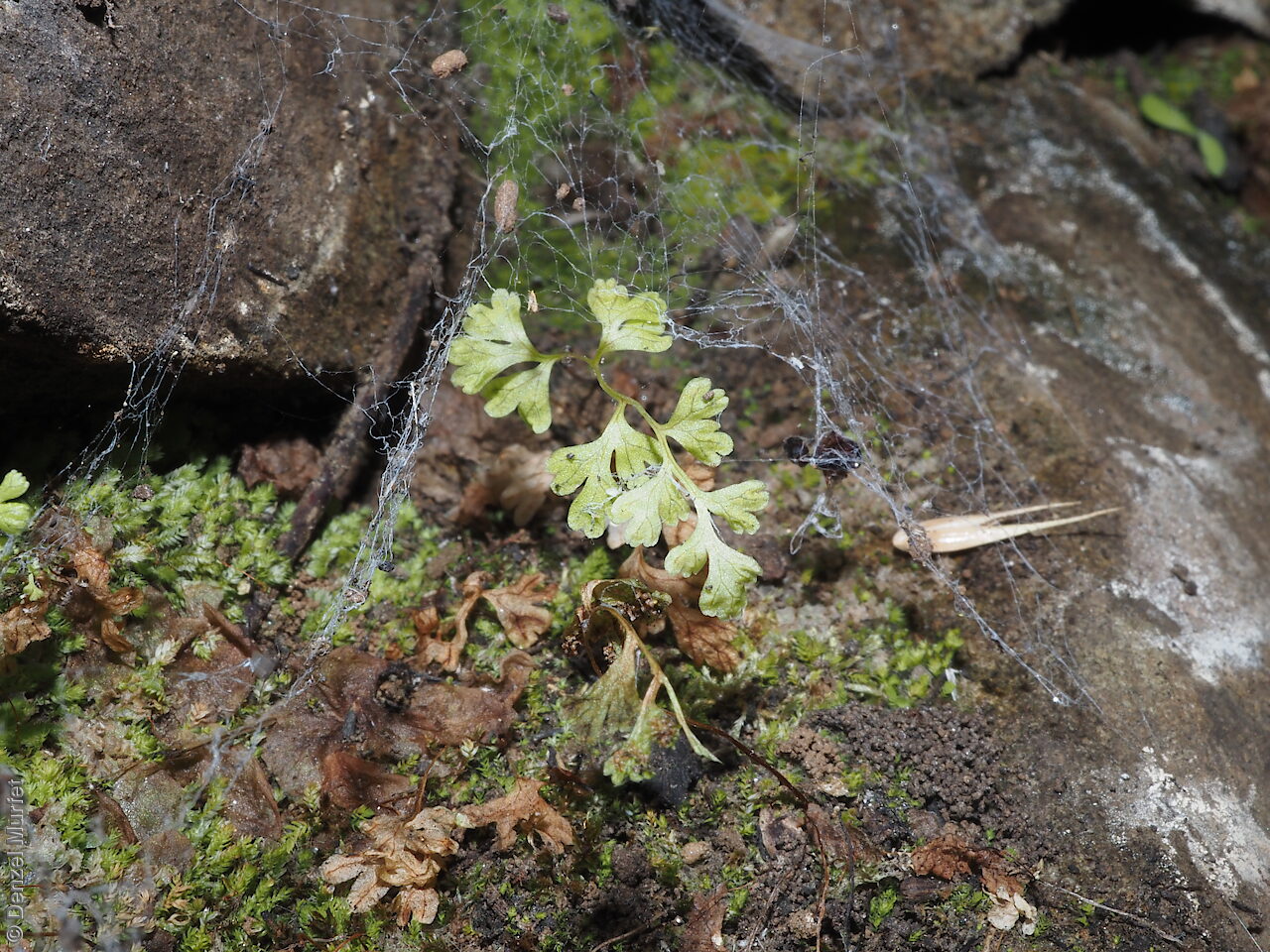Annual Fern
Display all 3 images



Regional Species Conservation Assessments per IBRA subregion.


Least concern
Near threatened
Rare
Vulnerable
Endangered
Critically endangered
Extinct
Data deficient
Adelaide
Arkaroola
Ceduna
Coober Pedy
Hawker
Innamincka
Marla
Marree
Mount Gambier
Oodnadatta
Renmark
Wudinna
Keith
Yunta
Display IBRA region text
| Mount Gambier (SVP02) | Southern Volcanic Plain | Endangered (IUCN: EN B2ab(i,ii,iii,iv)) (Probable Decline) [limited habitat; historic records] |
| Tintinara (NCP04) | Naracoorte Coastal Plain | Endangered (IUCN: EN B2ab(i,ii,iii,iv)) (Probable Decline) [limited habitat; historic records] |
| Kangaroo Island (KAN01) | Kanmantoo | Vulnerable (IUCN: VU D2) [grows in steep gullies, cliffs, rocky areas; little known] |
| Fleurieu (KAN02) | | Rare (IUCN: RA d(ii)) [annual] |
| Mount Lofty Ranges (FLB01) | Flinders Lofty Block | Rare (IUCN: RA d(ii)) [annual] |
| Broughton (FLB02) | | Least Concern [Annual, on rocky slopes & banks, undercollected] |
| Southern Flinders (FLB04) | | Least Concern [Annual, on rocky slopes & banks] |
| Northern Flinders (FLB05) | | Endangered (IUCN: EN B2ab(i,ii,iii,iv,v)) (Probable Decline) [needs annual rainfall, likes moss, rocks] |
| Eyre Hills (EYB03) | Eyre Yorke Block | Rare (IUCN: RA d(ii)) [probably more common] |
| Eyre Mallee (EYB05) | | Rare (IUCN: RA d(ii)) [probably more common] |
| Myall Plains (GAW01) | Gawler | Rare (IUCN: RA d(ii)) [probably more common] |
| Gawler Volcanics (GAW02) | | Rare (IUCN: RA d(ii)) [probably more common] |
| Everard Block (CER03) | Central Ranges | Data Deficient [possibly extinct] |
| Mount Gambier (SVP02) | Southern Volcanic Plain | Endangered (IUCN: EN B2ab(i,ii,iii,iv)) (Probable Decline) [limited habitat; historic records] |
| Tintinara (NCP04) | Naracoorte Coastal Plain | Endangered (IUCN: EN B2ab(i,ii,iii,iv)) (Probable Decline) [limited habitat; historic records] |
| 2 of 2 subregions | Kanmantoo | Rare , Vulnerable |
| 4 of 6 subregions | Flinders Lofty Block | Least Concern , Rare , Endangered |
| 2 of 5 subregions | Eyre Yorke Block | Rare |
| 2 of 8 subregions | Gawler | Rare |
| Everard Block (CER03) | Central Ranges | Data Deficient [possibly extinct] |
Botanical art
Kath Alcock paintings: 2
Prior names
Polypodium leptophyllum
Etymology
Anogramma from the Greek 'ano-' meaning upwards and 'gramme' meaning a writing, referring to the sori maturing first near the tips. Leptophylla from the Greek 'leptos' meaning narrow, slender and 'phyllon' meaning a leaf, referring to the species' small habit.
Distribution and status
Found ion the Eyre Peninsula, Flinders Ranges, southern Mount Lofty Ranges, Kangaroo Island and the lower South-east in South Australia, growing in sheltered, damp places such as log hollows and moist rock ledges and earth embankments. Also found in Western Australia, New South Wales, Victoria and Tasmania (and New Zealand, South America, Africa, India and Europe). Native. Common in South Australia. Common in the other States.
Herbarium regions: North Western, Flinders Ranges, Eyre Peninsula, Northern Lofty, Southern Lofty, Kangaroo Island, South Eastern, Green Adelaide
NRM regions: Adelaide and Mount Lofty Ranges, Alinytjara Wilurara, Eyre Peninsula, Kangaroo Island, Northern and Yorke, South Australian Arid Lands, South East
AVH map: SA distribution map (external link)
Plant description
A dimunitive fern with very short and poorly developed rhizome, growing from a perennial gametophyte. Fronds erect or spreading, delicate, very small, to 12 cm long with lamina very deeply lobed to 2-pinnate, fan-shaped, pale green or yellow-green, grabrous. Fruits are sori (spores) on the underside tip of the fronds. Seeds are very fine spores.
Seed collection and propagation
Look under the fronds and collect ones with spores and place in a seal paper bags to prevent spores from fulling out. Leave fronds in the paper bag to dry. The spores will fall off naturally or give the fronds a gentle shake. Use a very fine sieve to separate any unwanted material. Be careful as the spores are very fine. Store spores in an air tight container in a cool and dry place or in a -20oC freezer.




